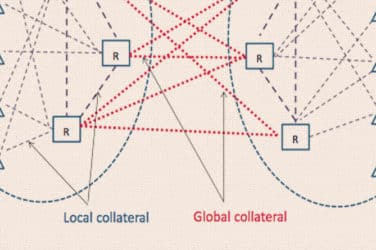
Banks are facing a world in which they will have less discretion and more intense supervisory oversight of their internal risk models, if the latest proposals for the Fundamental Review of the Trading Book (FRTB) from the Basel Committee on Banking Supervision (BCBS), published on October 31, are adopted.
“This second consultation incorporates feedback from industry delivered since the original consultation in May 2012, and many industry observations appear to have been taken into account,” said Vishal Vedi, partner, risk and regulation at Deloitte, said in a client memo. “However, as currently drafted, various aspects of the new proposals may still prove challenging for the industry to implement.”
Some key themes that emerge from the consultation include reduced discretion in the treatment of the division between the banking and trading books, more granular scrutiny of internal models, and increased methodology challenges, according to Vedi.
“The impact on individual firms will clearly depend on the extent of their trading activities, their current use of internal models, and the general sophistication of their risk management frameworks,” he said. “But as the name of the paper suggests, there are some fundamental changes being proposed. All banks should take note of them.”
Basel III introduced a new set of capital charges to capture the risk of changes to credit valuation adjustments (CVA). Under these rules, banks must capitalize the impact of changes in their counterparties’ credit spreads on the CVAs for all OTC derivatives. This must be done using either the standardized or advanced CVA approaches.
Credit Valuation Adjustment (CVA) is an adjustment to the valuation of a derivative transaction to account for the credit risk of contracting parties.
The Basel Committee said it “remains cautious of the degree to which CVA can be effectively captured in a single integrated modeling approach – recognizing the potential complexity and model risk in such an integrated model and the likelihood that allowing full integration may lead to significant variation in results.”
SuperDerivatives, a derivatives technology and trade execution provider, has enriched its multi-asset valuation service eValueX, its corporate risk and compliance system CorporeX and its multi asset front office system SDX, to calculate CVA for OTC derivatives portfolios.
The enhancement was launched in response to significant demand from corporate treasurers and auditors for a solution to the complex challenge of evaluating counterparty credit risk in response to regulatory requirements.
“With the regulatory changes in accounting coming into effect at the start of next year, we noticed a distinct need among corporates for a CVA solution that would enable them to evaluate and report their exposure to counterparty credit risk,” said Yuval Levy, chief technology officer at SuperDerivatives. “Our CVA solution was developed together with some clients in order to ensure best usage and full compliance.”
SuperDerivatives calculates CVA based on complex methodology using observable implied parameters that can be tailored to a company’s specifications. It enables the adjustment of mark-to-market valuations and pricing of new contracts to reflect the inherent counterparty credit risk associated with trades that are not fully collateralized.





